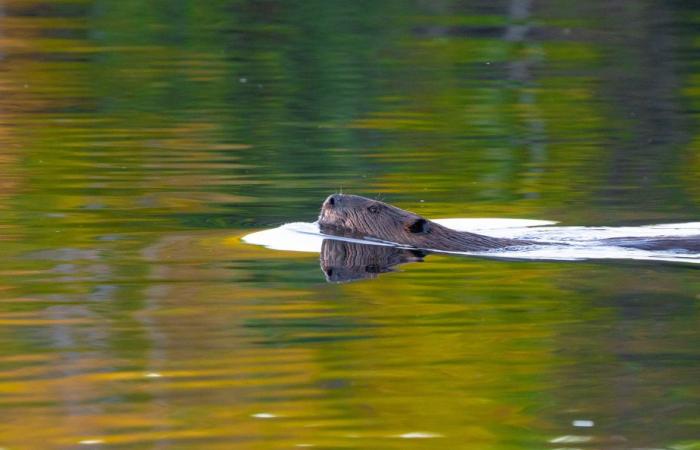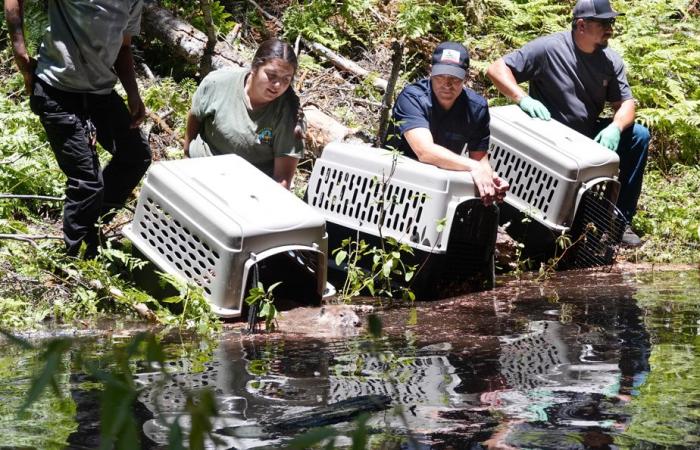Beaver dams retain water, maintain wetlands conducive to flora and fauna and even slow down forest fires. In the United States and Canada, government and environmental organizations are beginning to use them to combat the effects of climate change.
Posted at 1:45 a.m.
Updated at 9:00 a.m.
“When you study beavers, you realize that what they do protects habitats and other species from climate change. And they do it without being asked. It gives hope,” emphasizes Emily Fairfax, professor of geography at the University of Minnesota.
Beaver activity helps recharge water tables, expand floodplains, conserve water during periods of drought and restore river landscapes, several studies have confirmed over the years.
Their dams can even limit damage during “megafires”, these extreme forest fires that extend over more than 100,000 acres (almost 405 km2), shows research published at the beginning of the year.
PHOTO PROVIDED BY EMILY FAIRFAX
Emily Fairfax
In this study, of which Mme Fairfax is the lead author, the researchers used satellite images to measure the areas devastated by three megafires that raged in Colorado and Wyoming in 2020, and identify more than 1,500 beaver dams there.
“Beaver-modified river landscapes were more resistant to burning than river landscapes without beaver dams, and than non-riparian areas,” the study concludes. And this resistance could benefit the environment well after the fire, the authors suggest.
“To have mature animals and trees capable of reproducing and aiding post-fire recovery, it is important to preserve areas of the ecosystem as it was before the fire. Beaver wetlands are very good at providing this kind of habitat,” explains M.me Fairfax.
Return of the rodent
Several states in the American West hit by drought and wildfires, including California, Oregon, Washington state and Wyoming, have begun banking on beavers to restore habitats.
The federal Wildlife Agency (US Fish and Wildlife Service) has even published a practical guide for those who want to “work with beaver to restore waterways, wetlands and floodplains”.
In many places, beavers are being brought back to habitats where they had disappeared.
In California, a family of seven beavers was released last June on the territory of the Tule River Native Reservation, a partnership between the state and the Tule River Tribe. The Aboriginal people hope to improve water retention in this arid sector.

CALIFORNIA DEPARTMENT OF FISH AND WILDLIFE
Seven beavers were reintroduced to the Tule River Native Reservation in June 2024, a partnership between the tribe and the California Department of Fish and Wildlife.
Other projects attempt to attract beavers with the planting of willows and aspens, or the installation of imitation dams (Beaver Dam Analoguesor BDA). In Canada, the BC Wildlife Federation plans to install 100 dummy dams in the province, to create and restore some 10,000 wetlands.
And in some places, “you don’t need to bring back beavers, you just need to stop killing the ones that are there,” notes Mme Fairfax.
However, she understands landowners who are reluctant to let beavers settle on their land for fear of damage. “If we want to use beavers as a solution to climate change, we need to provide money and support for people,” to protect their trees or install pond levelers to limit flooding.
“You can’t just plant a beaver in a habitat without checking if it’s a good place for them,” says Cherie Westbrooke, an ecohydrologist at the University of Saskatchewan. “Will he have enough to eat, and for how long? What predators are present? »
According to some studies, beavers aged 2 to 3 years are the most suitable for relocation.
No catering in Eastern Canada
While beavers have gained popularity in the American West, “only a handful” of researchers specialize in this animal in Canada, and there are no restoration projects in the east of the country, says Professor Westbrooke .
However, even in wet and marshy areas like those found in Ontario or Quebec, beaver dams can make a difference, suggests preliminary data from Mme Fairfax.
His team analyzed satellite images of various regions ravaged by forest fires, including two areas of Ontario. Even in these relatively humid places, “areas developed by beavers burn less severely than the surrounding areas,” the researchers found.
Beavers are not the only ones helping nature, emphasizes Mme Fairfax.
Prairie dog burrows move water and heat into the soil, promoting aquifer recharge and vegetation growth. Bison create depressions that retain rainwater. In the Arctic, fox burrows create biodiversity dens, as the carcasses they bring there serve as fertilizer for plants that provide habitat for various species.
“They are all part of this category of animals called “ecological engineers”. And it’s nice to see that we’re finally giving them a little credit for all the work they do,” enthuses M.me Fairfax.
Read Emily Fairfax’s study








